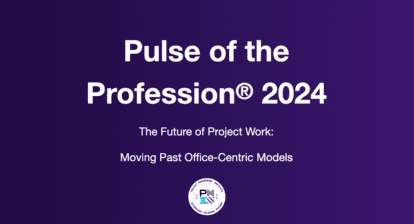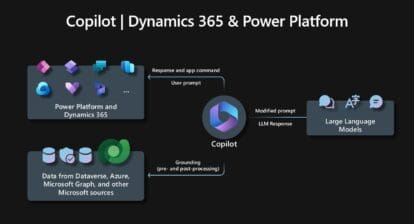
There are likely a wide variety of stakeholders that you interact with when managing your projects. They include employees, customers, vendors, investors, and leadership. Do you find that these stakeholders often have to take a place on the sidelines as you concentrate on the daily maintenance of your various projects and work challenges?
Building strong relationships with these individuals may require a shift in your focus. Trying to find a balance between your work and the people you work with is a constantly moving target, but striving for this balance can save you valuable time and reduce long-term difficulties that ultimately pull you away from work to deal with fractured relationships.
A healthy relationship builds secure connections that keep work moving forward more efficiently and with better cohesion. When you take time to work on these relationships, you create a framework that helps you strengthen trust and reduce the friction that causes fractures to ultimately occur when left unchecked.
Engagement makes a difference in the way you work and the effectiveness of your organization. Gallup identified key performance outcomes that are impacted by engagement within the workplace, to include 35% lower absenteeism, 10% higher customer metrics, and 21% higher productivity. Stronger relationships with stakeholders also improves time management. Imagine the hours you save by taking a few moments out of your workday to talk with a stakeholder and build a relationship. The time is, in comparison, short in contrast to dealing with a person who feels disconnected and undervalued, or who wastes precious time and effort complaining about a situation that has not been addressed. If you have ever worked at a job with low employee morale or for an organization with limited interest in customer care, you have seen the time spent responding to complaints about the system or the people that create the overall work experience. For many companies, these issues can be the difference between success and survival.
Another value-add for investing in relationships with stakeholders occurs at a personal level. A robust stakeholder relationship limits the need for the management of fractured relationships. Consider the difference between fixing small communication breakdowns as they occur and dealing with situations that have been avoided for a considerable length of time. The little disruptions might have a few minor fractures to the balance of your time, but situations that have been avoided long term cause more significant disruptions in the structure of your work when they come to the surface. Imagine a workday where you take a few extra minutes of your time to address a small issue that a customer or employee brings up. Then look at a day where you have avoided the little problem and the minor issue has now turned into a big one. People involved in this “big” situation are now, in addition to their first complaint, expressing their frustration with the disinterest you’ve show to resolve the situation. Even if you cannot offer a resolution, a small investment of time helps stakeholders to feel like they are connected to you and the ultimately the work of the organization.
While we are talking about frustration, let’s note that one of the key emotions that erode a company is frustration. You can use this knowledge to your advantage, though, as frustration is your meter for fractured relationships. When you see frustration in an individual, you have an indicator that it’s time to take a few minutes to address an issue or thank someone for their efforts. Frustration within yourself is an indicator that you need to find a reconnection to the organization. You are also a stakeholder, so the relationship with yourself also strengthens the work and the team’s ability to stay united. Andrew O’Keeffe discusses these relationships in his book Hardwired Humans. He provides insight into how we maintain liaisons with others and work toward a common goal. And, it’s true that an aspect of stakeholder relationships is keeping everyone focused on the forward movement of the goal/mission of the organization. You want to address frustration and maintain engagement, but also remember that the motion should be forward. This means taking discussions toward solutions and results. Talking about how frustrated one is about something or someone takes people and situations backward. Discussing possible solutions and setting up ways to better engage someone’s work activities moves the conversation and relationship forward.
The ultimate goal in maintaining strong relationships with stakeholders is to find the balance between daily work and stakeholders while monitoring frustration as you move the company forward. This process is no small task when your workload is high and time is limited. A valuable exercise to reset the balance may be to take some development time to identify your stakeholders and see how they fit into the connectivity of your work. Graham Kenny recently wrote an article for the Harvard Business Review that brought to light five questions to identify stakeholders. The goal of this exercise is to help you direct your organization’s energy and resources in a more cohesive way between relationships and activities. This consideration will enable you to answer questions about who has an impact on work performance, and what is needed from that particular stakeholder? Take the information you obtain from looking at your stakeholders to shed light on new directions for the workflow and set up timelines for communication. You might find that some stakeholders no longer fit into the long-term goals of the company or that frustration levels from some stakeholders are causing detriment to the quality or quantity of work.
The process for building a significant stakeholder relationship that also builds trust that is a valuable commodity in the ever changing work culture of our time. As we become more connected to machine intelligence and interactions, the human element of work loses a bit of space in the makeup of our workplace. Maintaining stakeholder relationships helps you to not only keep your work efficient, but also helps you to preserve a little humanity in the work place. You never know how those few moments can change the course of your work or the work of the organization.
Learn more by watching my on-demand webinar, Building Positive Relationships with Stakeholders. The discussion will give you some building blocks for helping to keep people connected in a working environment. And, it’s eligible for 0.75 PMI® PDUs in the Power Skills category of the Talent Triangle.







